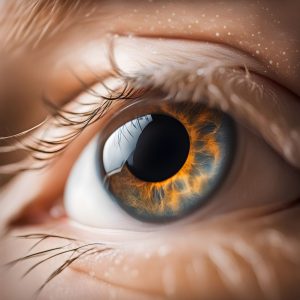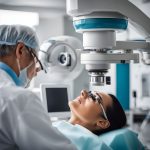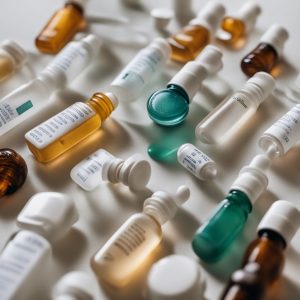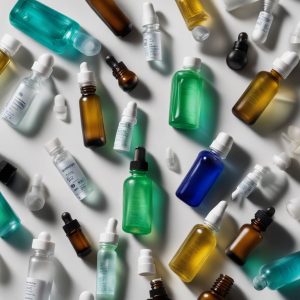Eye Drop Recall: Recognizing Its Need and Consequences for Eye Health
A remarkable recall of certain eye drops has occurred in the medical community in recent months due to the discovery of serious illnesses associated with their usage. This page explores the rationale for the recall, the instances it has resulted in, the basic function of eye drops, and the physiological reactions they cause in the eye.
The Importance of the Recall
Reports of negative side effects, including as serious eye infections that in some instances required surgical removal of the eye and visual loss, prompted the recall. The source was identified via investigations as a highly aggressive form of bacteria resistant to common antibiotics contaminating the items. Health officials responded quickly to this concerning scenario, highlighting how crucial product safety is to eye health.
Eye Drops’ Function in Eye Health
Eye drops are necessary for a number of purposes, including glaucoma management, infection treatment, and moisturizing dry eyes. They serve as a pillar of the global ocular health care system, offering millions of people respite and healing advantages. These drops’ carefully crafted mix is meant to resemble the tears that naturally form in the eye, so moisture, defense, and healing ingredients come into direct contact with the surface of the eye.
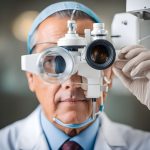
Eye Drops’ Effect on Physiology
When applied, eye drops disperse across the cornea, starting a number of physiological reactions. The purpose of lubricating drops is to create a layer of defense that shields the cornea from dryness and discomfort while closely imitating the tear film that naturally forms in the eye. This film provides a smooth surface that preserves and makes vision clear, which is essential for preserving corneal health.
The active chemicals in medicated drops are designed to address certain disorders, such as lowering intraocular pressure in glaucoma patients, reducing inflammation, or fighting viral or bacterial infections. Because of the structure of the eye, these drugs may be absorbed more quickly, resulting in more focused, localized therapy that reduces systemic adverse effects.
The Value of Alertness and Reliability
The recall emphasizes how important it is to keep an eye on product safety and how much people rely on healthcare supplies. It acts as a reminder of the intricate balancing act between the advantages and disadvantages of medical interventions. Following the recall, patients and medical professionals need to have an honest discussion about the usage of eye drops, looking into substitutes if needed, and making sure the goods used are clean, safe, and effective.
The event emphasizes how crucial it is to have regulatory control and ongoing product monitoring in place to protect the public’s health. Let this recall serve as a wake-up call to tighten safety regulations for items related to eye health and as a constant reminder of the constant effort needed to preserve our eyesight.

To further elaborate on the need for the recall, it’s critical to comprehend the gravity and extent of the situation that led to this momentous decision. The decision to recall the eye drops was not taken lightly; rather, it was in reaction to an increasing number of serious diseases that were directly connected to tainted items. These infections, brought on by a kind of bacteria not previously seen in these kinds of items, resulted in major health issues, some of which required surgery and even blindness.
Treatment for these illnesses may be especially challenging since the bacteria causing them are well-known for being resistant to standard medications. The clinical care of afflicted individuals is made more difficult by this resistance, which often necessitates the use of stronger antibiotics or, in extreme situations, surgical removal of the diseased eye in order to stop the infection from spreading.
The severity of the problem was highlighted by statistical data, which showed a sizable number of cases recorded in many states. The FDA and other health authorities moved quickly to recall the contaminated items and to investigate the source of the contamination. This action was essential to stopping new instances and protecting the general public’s health.
Furthermore, the recall acts as a clear reminder of the weaknesses in the supply chain and production processes for healthcare items. It emphasizes how crucial strict quality control procedures are, as well as how ongoing observation is required to identify and resolve any possible risks to patient safety.
Patients and medical professionals are advised to use eye drops with caution in light of the recall. If a patient has been using one of the recalled items, they are recommended to speak with their healthcare professional about other options. In order to avoid future instances of this kind of incident, requests have been made for tougher compliance requirements and more inspection of the regulatory frameworks controlling over-the-counter eye health goods.
The eye drop recall is a significant incident that highlights the challenges associated with guaranteeing product safety in the intricate global healthcare environment. It serves as a reminder of how important it is to exercise caution at every stage of manufacturing and consumption in order to preserve consumers’ faith in healthcare practitioners and goods.

